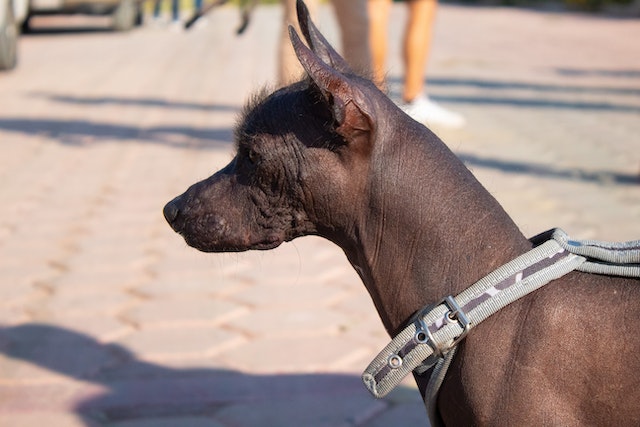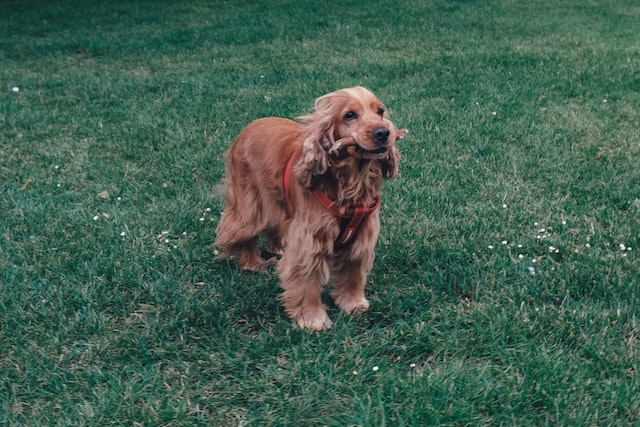The Mexican Hairless (Toy)
The Hairless Mexican Toy dogs are often used in animal assisted therapy, because they are sensitive to the moods of humans and is a warm and affectionate companion. The Hairless Mexican dogs are very loyal and devoting to their family and will most likely, follow you from room to room. They need to be involved with the family and receive a lot of love and attention.

The Toy Mexican Hairless, come with a lot of energy and need regular exercise to expend the energy. Along with their daily walk, running around in an enclosed yard with their toys is a perfect way of getting them to spend all the excess energy. Be careful though, they just might jump the fence and go explore the neighbourhood. The Mexican Toy dogs have a tendency to chase smaller animals so if you have a smaller house pet, it’ll be a good idea to the raise them together, so the dog gets used to having them around.
The small Mexican dog is as aloof and suspicious of strangers as it is loving and affectionate towards its family. This makes the breed good watch dogs and they will not back down if they perceive the intruder as a serious threat. But if they’re not introduced to people while growing up, they might develop a hostile attitude towards people outside of their family. Being a sociable dog is a part of training them. Fairly easy to train, there might be times when you experience some stubbornness on their part wherein you will have to deal with it with firmness and discipline. Rough handling and harsh words won’t get you anywhere, so there’s no point in going there! This breed of hairless dogs are best suited for older children, who know how to handle them; the Mexican Hairless dogs will not tolerate abuse and this could make younger children vulnerable.
Otherwise a healthy dog, the Hairless Mexican Toy dog does need to be covered during harsh winters and because of the lack of fur, covered in sunscreen during the hot summers. An odorless dog that doesn’t shed at all, the Mexican Toy Hairless dog can be quite the addition to your family.
Appearance:
- Average Height: 9-11 inches
- Average Weight: 5-15 lbs
Care & Health:
Grooming- The Hairless Mexican Toy dog requires no upkeep with regards to their coats.
History:
The Hairless Toy Mexican has been around for almost 3000 years now! On Columbus’s first voyage in 1492, he discovered that the Toy Hairless Mexican dog was the sacred pet of the Aztecs. In the 19th century, they were introduced to Mexico and Central & South America; admitted to the AKC in 1887.
In the 1950’s, the breed faced near extinction and had to be consciously re-bred, gradually increasing in numbers. Although the breed was re-admitted in the AKC in 2008, they still are quite few in numbers.
The American Cocker Spaniel
When a dog is happy, only its tail should be wagging. Seldom will you come across a dog that wags its entire body. The American Cocker Spaniel has one only motive in life- to please its family. They get so happy when they see people they love that they start wagging their tails with so much vigour that it feels like the entire body is wagging.

One of the best family dogs you could ever have, this breed of Cocker Spaniels are lively, playful and devoted and thrive on human companionship. If you leave them alone for too long, they get lonely and start looking at things around them for entertainment. There are times when they might even resort to urination to convey their distress and unhappiness. Sensitive by nature, these Spaniels are always looking to do things that will please you. Their sensitive nature needs to be taken into account while training them. Fairly easy to train, you will seldom come across any difficulty is teaching them the commands. You might, however, experience some challenge is housebreaking them. The key here is to be gentle in the face of any challenging scenario.
The American Cocker Spaniels make for good watchdogs; they are more likely to make friends with the intruder than scare them off. They will start barking, nevertheless, but once they know the intruder poses no threat, they are happy to make friends. To prevent the Cocker Spaniels from growing up to be shy and timid dogs, introduce them to people outside of their family during their puppyhood. The Cocker Spaniel dogs get along fabulously with other house pets and older responsible children.
The Spaniels are prone to gain some extra weight, so you might want to keep an eye on them, lest they steal food and devour it…they are also very likely to catch ear infections, so when you groom them you could also clean out their ears…
Care & Health:
- Major concerns: cataracts, glaucoma, patellar luxation
- Minor concerns: CHD, ectropion, entropion, PRA, allergies, seborrhea, lip fold pyoderma, otitis externa, liver disease, urolithiasis, prolapse of nictitans gland, CHF, phosphofructokinase deficiency, cardiomyopathy
- Occasionally seen: gastric torsion, elbow dysplasia
- Suggested tests: eye, knee, DNA for phosphofructokinase deficiency, (hip)
- Life span: 12 – 15 years
- Grooming: To avoid tangles and matting, the coat should be brushed for about 15 min twice a week.
History:
The American Cocker Spaniel traces its roots back to the Spanish dogs of the 14th century, who were then used for hunting birds. This breed of Spanish dogs were then refined and then introduced to England in the late 1800s. A smaller breed of the English Cocker Spaniel was developed and then introduced to America; the first Cocker Spaniel ever to be introduced to the United States.
The AKC first recognized the Cocker Spaniel breed in 1878 and it wasn’t until the 1930s that the American Cocker Spaniel and the English Cocker Spaniel were recognized as two separate breeds. As of 2007, the American Cocker Spaniel’s popularity ranked 17th out of 157 breeds.
